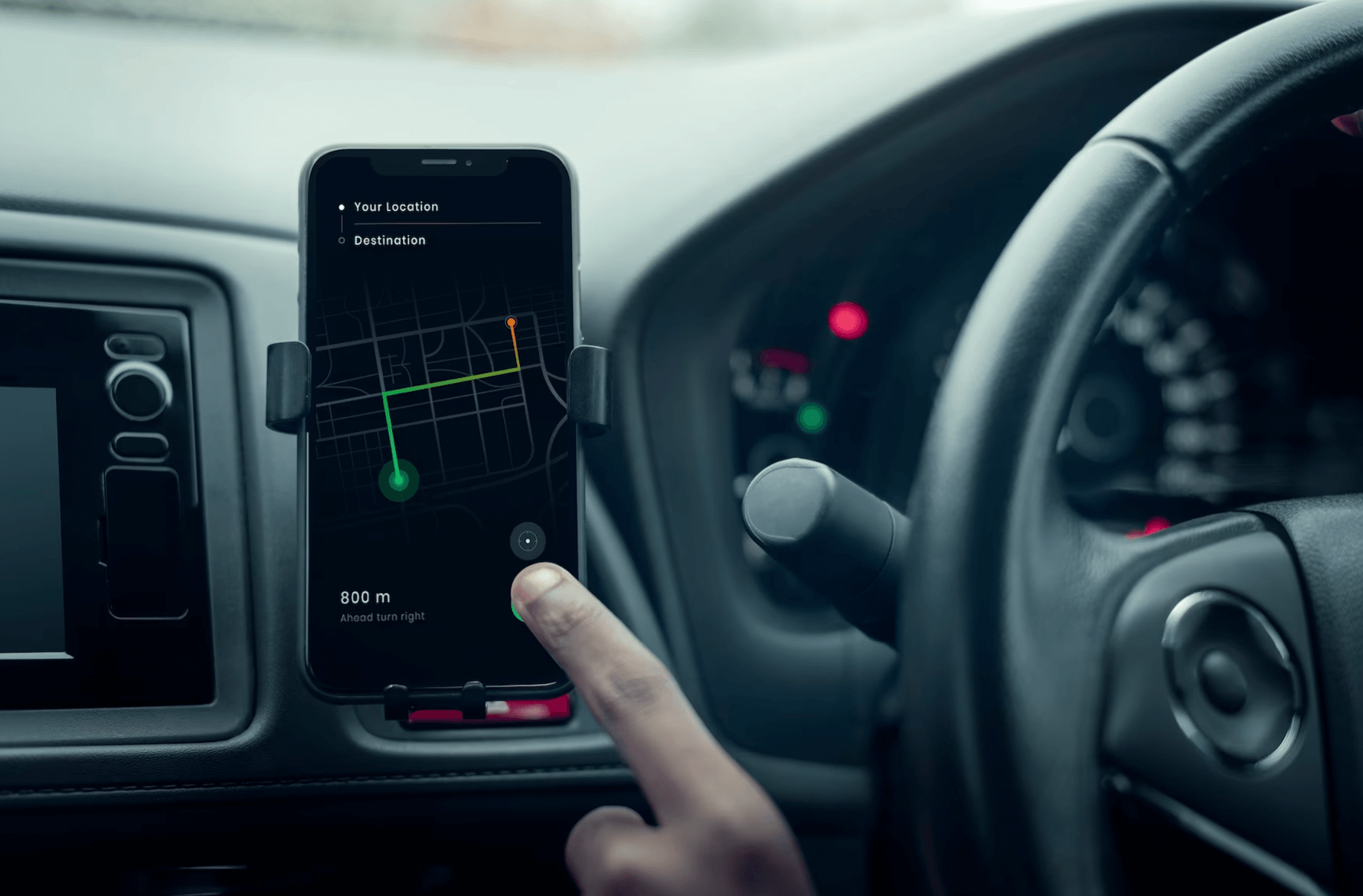Efficient fleet management is essential for many businesses and organizations. At the heart of this logistical revolution lies a technological tool that has become indispensable: vehicle geolocation. Whether you’re a fleet manager looking to optimize operations or a driver concerned with road safety, vehicle geolocation emerges as a multifaceted technology capable of transforming how we understand and use our vehicles.
- Vehicle Geolocation: Why It’s Important?
- Vehicle Geolocation: Different Technologies
- Vehicle Geolocation: How to Choose Your Tracker?
- Vehicle Geolocation: Rules to Follow
- Vehicle Geolocation: Can Employees Say No?
Vehicle Geolocation: Why It’s Important?
- Route Optimization
The primary reason for the importance of vehicle geolocation lies in its ability to optimize routes. By knowing the exact location of each vehicle, a company can choose the shortest and most efficient route for each mission, reducing travel times and fuel costs.
- Enhanced Safety
Driver and vehicle safety is a major concern for any fleet-based company. Through geolocation, it’s possible to monitor:
-
- Speed
- Driving behavior
- and receive alerts for dangerous driving.
This helps reduce the risk of accidents and protects the company’s human and material assets.
- Downtime Management
With real-time visibility into the location of vehicles, a company can effectively plan maintenance and repairs, reducing operational interruptions.
- Control of Operational Costs
Vehicle geolocation allows for close monitoring of fleet-related expenses, including fuel, vehicle maintenance, and tolls. This enables better decision-making to reduce operational costs.
- Faster Customer Response
For a business, there’s nothing more crucial than keeping its customers satisfied. The ability to know the real-time location of vehicles allows for better responsiveness to customers. A company can provide precise information about the estimated arrival time for deliveries or service calls. This added information improves customer satisfaction.
- Compliance with Regulations
Certain industries, such as the transportation sector, are subject to strict vehicle tracking requirements. Geolocation technology helps ensure compliance with these regulations.

Vehicle Geolocation: Different Technologies
- GPS Geolocation
GPS geolocation is the most commonly used method. It relies on a network of 24 satellites orbiting the Earth. A GPS receiver installed in the vehicle continuously receives signals transmitted by these satellites. It interprets this geographical data to display the vehicle’s exact position on a map. This map can be interactive, updating in real-time as the vehicle moves. This technology is often integrated into the navigation systems of passenger cars.
- IP Address Geolocation
IP address geolocation relies on the internet network. Every device or receiver connected to the web has a unique IP address, which allows it to be located at the country, region, or even city level. However, this method remains relatively imprecise because it is based on the IP address assigned by the internet service provider, which can be shared by multiple users.
- WiFi Geolocation
WiFi geolocation depends on a network of WiFi access points scattered throughout an area. To locate a vehicle, it must be in proximity to one of these WiFi access points. This technology requires a significant infrastructure of WiFi access points. The drawback is that it limits its use in certain regions.
- GSM Geolocation
GSM geolocation relies on the mobile network. The principle is simple: the phone emits a signal to the nearest mobile relay. An external server then calculates the phone’s position by measuring the time elapsed between the transmission and reception of the GSM signal. This method is less accurate than GPS geolocation but works even in areas where the GPS signal is weak or unavailable.
Each geolocation technology has its advantages and disadvantages, and the choice depends on the specific needs of the business. To select the most suitable solution, it is essential to consider the required accuracy, geographic coverage, installation and operating costs, and the availability of the necessary infrastructure.
Enhancing customer satisfaction and employee safety is a top priority for any business. That’s where effective vehicle geolocation comes into play!
Vehicle Geolocation: How to Choose Your Tracker?
- Identify Your Specific Needs
Before embarking on the search for the ideal tracker, define your specific requirements for vehicle geolocation. Ask yourself the following questions:
- How many vehicles do you want to track?
- What is the update frequency for location data that you require?
- Do you need additional features like fuel consumption management, driver behavior monitoring, or door-opening detection?
- What is your budget for purchasing and installing the trackers?
Once you have a clear understanding of your needs, you can narrow down your search to trackers that offer corresponding features.
- Ensure Compatibility with Your Vehicles
Not all vehicles are the same, and it’s crucial to choose a tracker that is compatible with your fleet. Check the tracker’s compatibility with the vehicle models you own, especially if your fleet consists of a variety of different vehicles, such as cars, trucks, utility vehicles, etc.
- Analyze Network Coverage Quality
The accuracy of geolocation largely depends on the quality of network coverage. Ensure that the tracker you’re considering is compatible with the telecommunications networks in the areas where you operate. Good network coverage ensures precise, real-time vehicle location.
- Consider Battery Life
Battery life is a key factor to consider, especially if you intend to install trackers on vehicles that travel long distances. Opt for a tracker with a battery life suitable for your needs. Some trackers have rechargeable batteries, while others operate on disposable batteries.
- Choose a Tracker with User-Friendly Tracking Platform
The ease of use of the tracking platform is an essential element not to be overlooked. A user-friendly interface will allow you to monitor your vehicles and access data in a simple and intuitive manner. Ensure that the platform provides reporting and analysis features to optimize fleet management.
- Think About Data Security
Data security for geolocation information is vital, especially if you deal with sensitive information. Make sure that the tracker you choose offers robust security measures to protect your company’s data from unauthorized access.
Finding the right solution is essential to optimize fleet management.
Vehicle Geolocation: Rules to Follow
- Driver Consent
The first essential rule when implementing a vehicle geolocation system is to obtain driver consent. It’s crucial to inform them clearly about the use of this technology, its objectives, and the data that will be collected. Informed consent from each driver must be obtained before initiating geolocation.
- Legal Use of Data
Vehicle geolocation involves the collection of sensitive data. It’s imperative to comply with all laws and regulations regarding the protection of personal data. Ensure that you store, process, and share this data in accordance with applicable legislation, such as the General Data Protection Regulation (GDPR) in Europe.
- Transparency and Communication
To build trust within your company and among your employees, maintaining transparent communication is essential. Explain why geolocation is being implemented, how it works, and how the data will be used. Address employees’ questions and concerns to eliminate any ambiguity.
- Limit Data Collection
Collect only the data necessary for your specific objectives. Avoid gathering excessive or unnecessary information, as it can intrude on drivers’ privacy. Restrict data collection to what is essential for fleet management, safety, or other legitimate business needs.
- Data Security
Ensure that vehicle geolocation data is stored securely. Implement protective measures such as firewalls, strong passwords, and encryption protocols to prevent unauthorized access to sensitive information.
- Training and Awareness
Train your employees on the proper use of vehicle geolocation and data protection. Raise awareness about privacy issues and the importance of adhering to established rules.

Vehicle Geolocation: Can Employees Say No?
An essential point to understand is that, in many countries, employees have the right to refuse to be subjected to geolocation. However, this may vary depending on local legislation and company agreements. Therefore, it is recommended to consult a legal expert to ensure compliance with applicable laws.
We also recommend involving employees in the decision-making process regarding geolocation. Their feedback and concerns should be considered, contributing to a climate of trust within the company.

